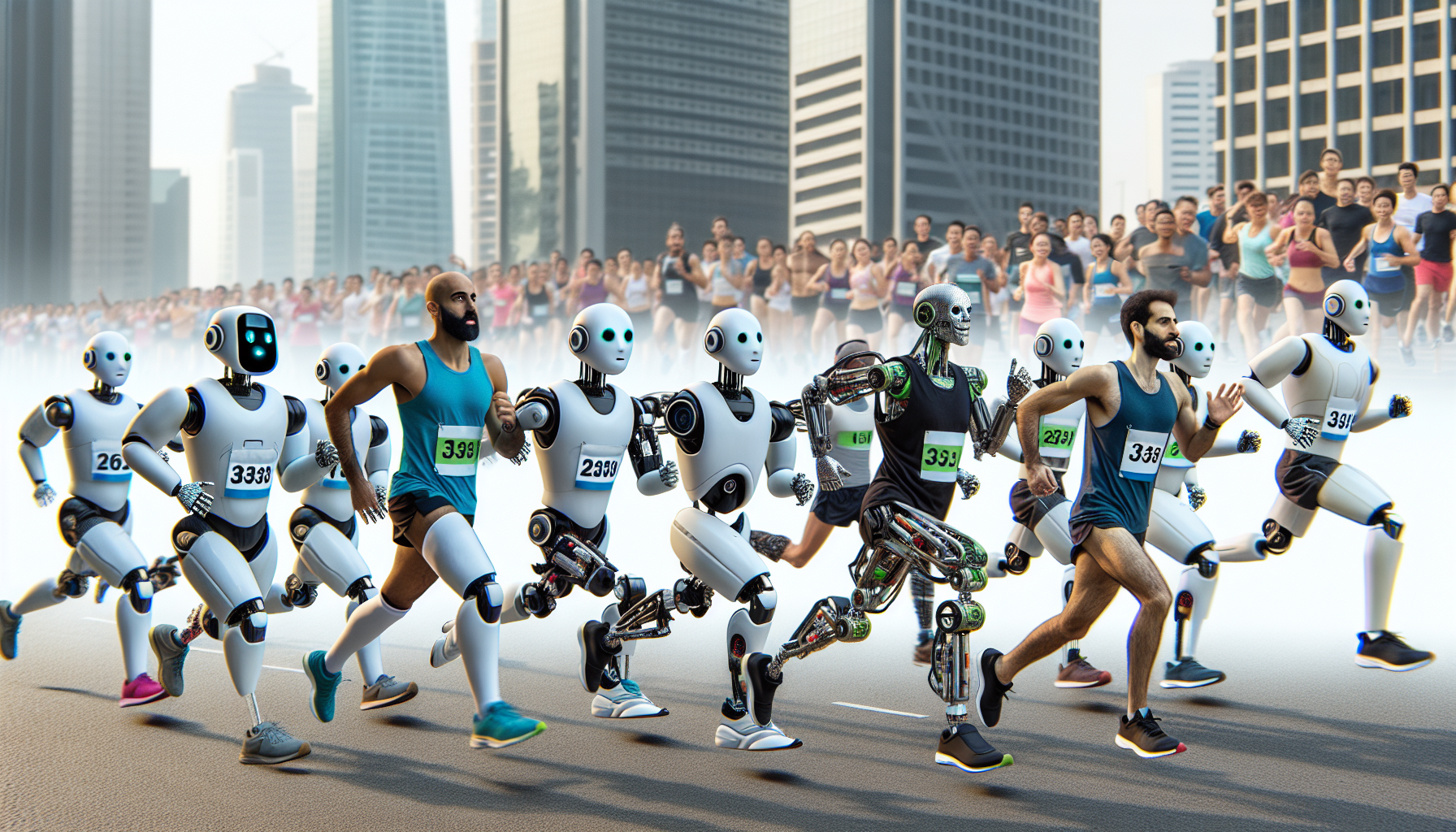
The Emergence of Robotic Athletes: Exploring the World’s First Robot Half-Marathon in Beijing
In a remarkable blend of technology and sports, Beijing recently hosted the inaugural half-marathon for robots. This landmark event featured 21 bipedal robots, each paired with human operators, as they took on the 13.1-mile course. While the outcomes leaned more towards humor than seriousness, this event signified a pivotal moment in the advancement of robotics and artificial intelligence.
Let’s delve into what transpired, its implications for the future of robotics, and how this unusual race could influence the next generation of humanoid machines.
The Event: A Half-Marathon Unlike Any Other
The robot half-marathon took place in Beijing, showcasing 21 humanoid robots, each engineered to walk or run on two legs, imitating human movement. Unlike conventional robot contests that emphasize activities such as dancing or navigating obstacles, this event assessed endurance, balance, and practical mobility across a long-distance path.
Human operators were present to assist the robots, providing support and steering. Nevertheless, the expectation was that the robots would finish the course independently, with minimal help. The objective? To complete the 13.1-mile race within a four-hour timeframe.
Amusing Mishaps and Technological Triumphs
As anticipated, the race was filled with both victories and missteps. Reports indicated that one robot stumbled at the starting point, another literally lost its head, and one completely fell apart, shattering into fragments. In spite of these challenges, four robots successfully crossed the finish line within the designated time.
The highlight was Tiangong Ultra, a five-foot-ten humanoid engineered by X Humanoid. It finished the course in two hours and 40 minutes, averaging about five miles per hour. While that time significantly exceeds elite human runners, it is a notable accomplishment for a bipedal robot.
Battery changes were allowed during the race, and it was noted that Tiangong Ultra finished the marathon on its third battery. Teams could also replace robots during the race, although doing so resulted in time penalties.
Introducing the Robotic Runners
The roster of robotic contenders was varied and entertaining. Here are some of the noteworthy participants:
- Tiangong Ultra: The ultimate victor, recognized for its height and stamina.
- Noetix Robotics’ N2: A slick, Gundam-inspired robot that caught attention with its futuristic aesthetic.
- Huan Huan: A “female-looking” robot designed to promote gender diversity in the field of robotics.
- Little Giant: A 30-inch-tall robot crafted by local college students, showcasing academia’s role in furthering robotics.
Numerous robots donned human running shoes, adding a humorous yet functional flair to their appearance.
The Importance: The Future of Humanoid Robots
While the race may have appeared as a novelty, it bears deeper significance for the future of robotics. Bipedal robots are notoriously challenging to design due to the intricacies of human-like motion. Such events push the limits of what robots can achieve in real-world situations.
From emergency response to elder care, humanoid robots could transform numerous sectors. Endurance competitions like this marathon provide essential testing venues for enhancing robot stability, battery longevity, and autonomous decision-making.
Battery Efficiency and Endurance: A Major Challenge
Battery longevity posed one of the biggest obstacles in the race. Tiangong Ultra needed three battery changes to complete the course, emphasizing the demand for more efficient power systems in robotics. This issue transcends humanoid robots, also impacting consumer technologies like wireless earbuds and mobile devices.
Advancing battery technology will be vital for enabling prolonged operational periods and more complex functions in future robots.
The Significance of Human-Robot Collaboration
Another insight gained from the event was the crucial role of human-robot collaboration. Although the robots operated autonomously, human operators were essential in ensuring their safety and performance. This combined approach may become a norm in future applications, where robots and humans collaborate to achieve common objectives.
In Summary
Beijing’s robot half-marathon, though marked by stumbles and spectacle, illustrated the remarkable advancements being made in humanoid robotics. With innovations in battery technology and practical mobility, the event brought attention to both the obstacles and the possibilities of robotic athletes.
As technology progresses, it’s reasonable to expect that future marathons will feature robots not only as participants but also as contenders.
Q&A: All You Need to Know About the Robot Half-Marathon
What was the goal of the robot half-marathon?
The event aimed to evaluate the endurance, mobility, and real-world abilities of bipedal humanoid robots. It served as both a public demonstration and a research opportunity for developers to identify areas for enhancement.
How many robots completed the race?
From the 21 participating robots, only four finished the 13.1-mile course within the four-hour time constraint.
Who was the victor of the race?
The winner was Tiangong Ultra, a five-foot-ten robot created by X Humanoid. It completed the race in two hours and 40 minutes.
Were the robots completely autonomous?
While the robots moved independently, human operators accompanied them for safety and assistance. Some teams also swapped robots during the race, which resulted in time penalties.
What challenges did the robots encounter?
The primary challenges involved balance, battery longevity, and mechanical robustness. Some robots stumbled, broke down, or required multiple battery changes to finish the race.
Why is this event important?
It marks a significant advancement in the evolution of humanoid robots capable of navigating real-world scenarios. The event also highlighted the necessity for improved battery technology and human-robot collaboration.
Will more robot races be organized in the future?
Given the public interest and the technological learnings, it’s likely that similar events will take place in the future, possibly featuring more advanced robots and longer distances.